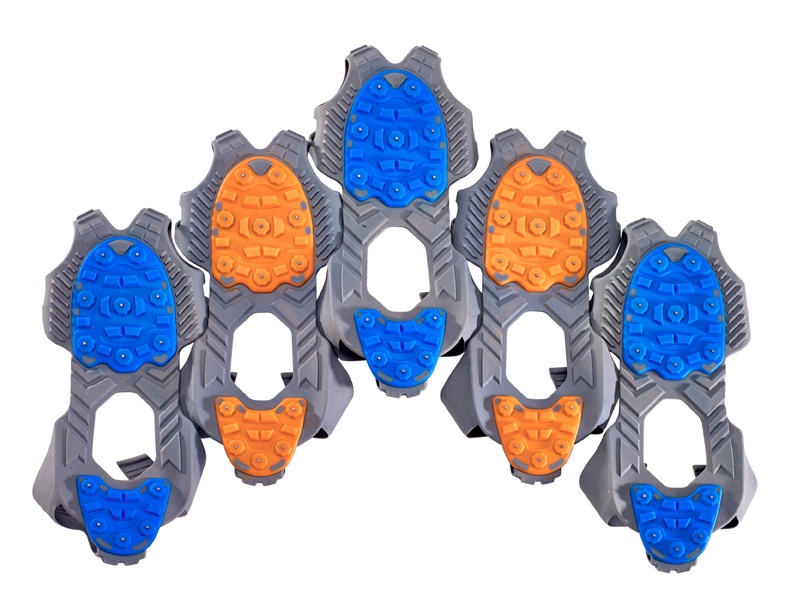I recently spoke with a customer who has been buying our ice cleats for years. They’ve had a few slip and fall accidents on the ice and snow this winter and are, understandably, very frustrated. After the accident investigations, they realized each incident had the same the root cause: None of the employees who fell were wearing the ice cleats and winter traction aids that were being provided. Does this sound familiar to you? This is one of the most frustrating, but preventable, things a safety professional can hear. Have you ever noticed problems with employee engagement? Most likely, you hav[…]
Continue Reading
If you’re a safety manager, chances are, reducing winter slips and falls are top of mind right now. There are many considerations when searching for the perfect ice cleat or traction aid – including whether to use replaceable or permanent spikes – so we’re going to try to make that decision as easy as possible for you if you can only choose one. Replacing spikes in traction footwear is indeed a cost-saving option. It allows you to re-use existing footwear for just a few dollars a pair. The downside?
Continue Reading
Resistance to change is simply part of human nature. If you want to see that resistance in action, try introducing a new piece of PPE to an established workforce. I cannot tell you how many times I have heard the following response when discussing ice cleats with a safety manager: “It’s not even worth buying ice cleats this winter. I know my guys. They’ll never bother to put them on.”
Continue Reading
I help companies of all sizes, ranging from several hundred to more than 100,000 employees. On the surface, you wouldn’t think they have much in common when it comes to safety. But, in reality, their approaches are often identical when it comes to solving the problem of winter slips and falls on snow and ice. The truth is, preventing winter slips and falls is low-hanging fruit in the world of employee safety. With minimal effort, effective safety professionals have the ability to save their organizations huge sums of money, in both workers compensation costs and lost production time.
Continue Reading
Every safety manager’s nightmare may include some winter weather. And it’s no wonder – we all know that slips and falls can do serious damage to a perfect safety record. Now, I’m sure you’re well aware that reducing winter slip and fall incidents starts with increasing traction. And increasing traction on snow and ice is easy -- just about any cleated or spiked item that you can find will do the job, right? True. But the difficult task is to increase traction while allowing employees to do their jobs with minimal interference. After all, what good is traction footwear if it won’t allow you do […]
Continue Reading
I’ve noticed a trend over the last several years. Organizations, both large and small, are chasing the zero accidents/incidents dream. And, I’m sorry to report, this is a goal they just won’t reach. Because there’s a seasonal safety hazard that’s a ticking time bomb. It’s called winter. And it’s right around the corner. Most of you will likely have had one or more winter storms with ice and snow before winter’s official start on December 21st. If you live in a cold-weather state in the U.S or a cold-weather province in Canada, it’s not “if” winter is coming, but when.
Continue Reading












